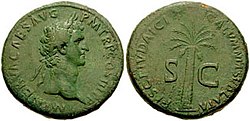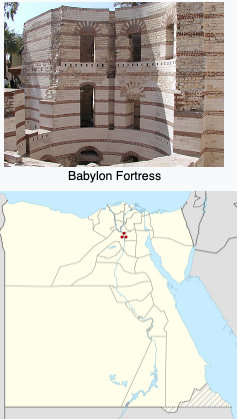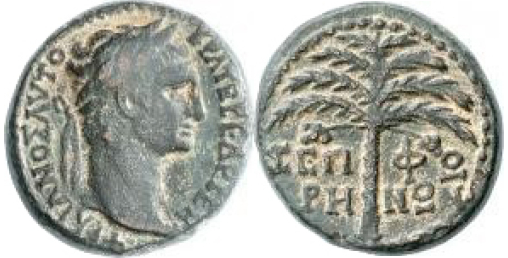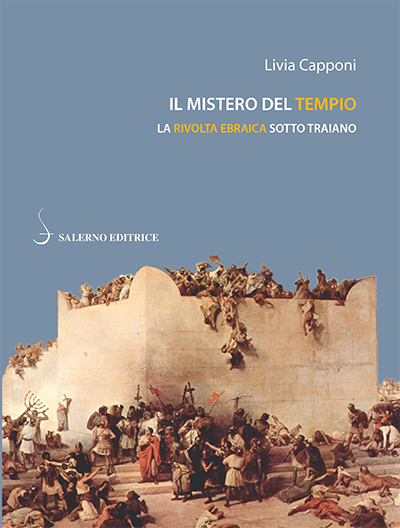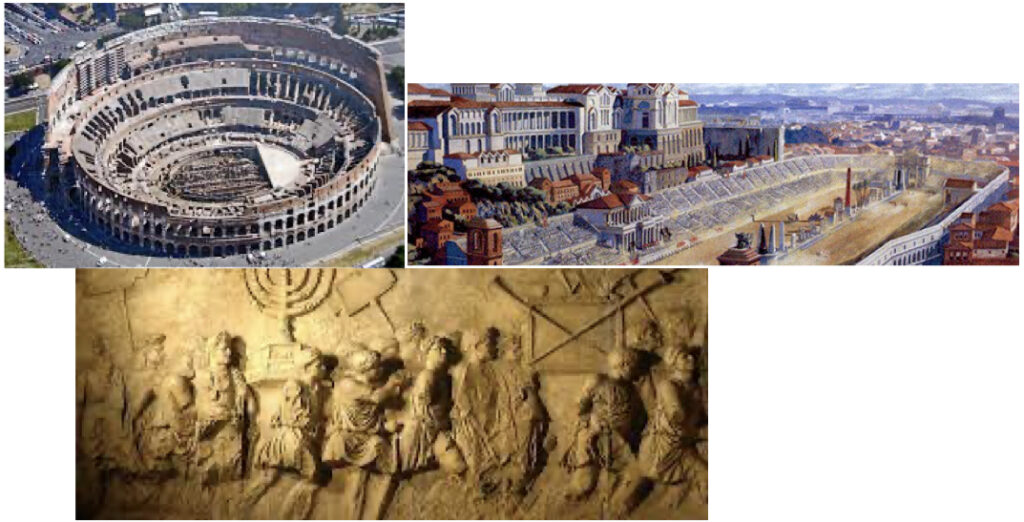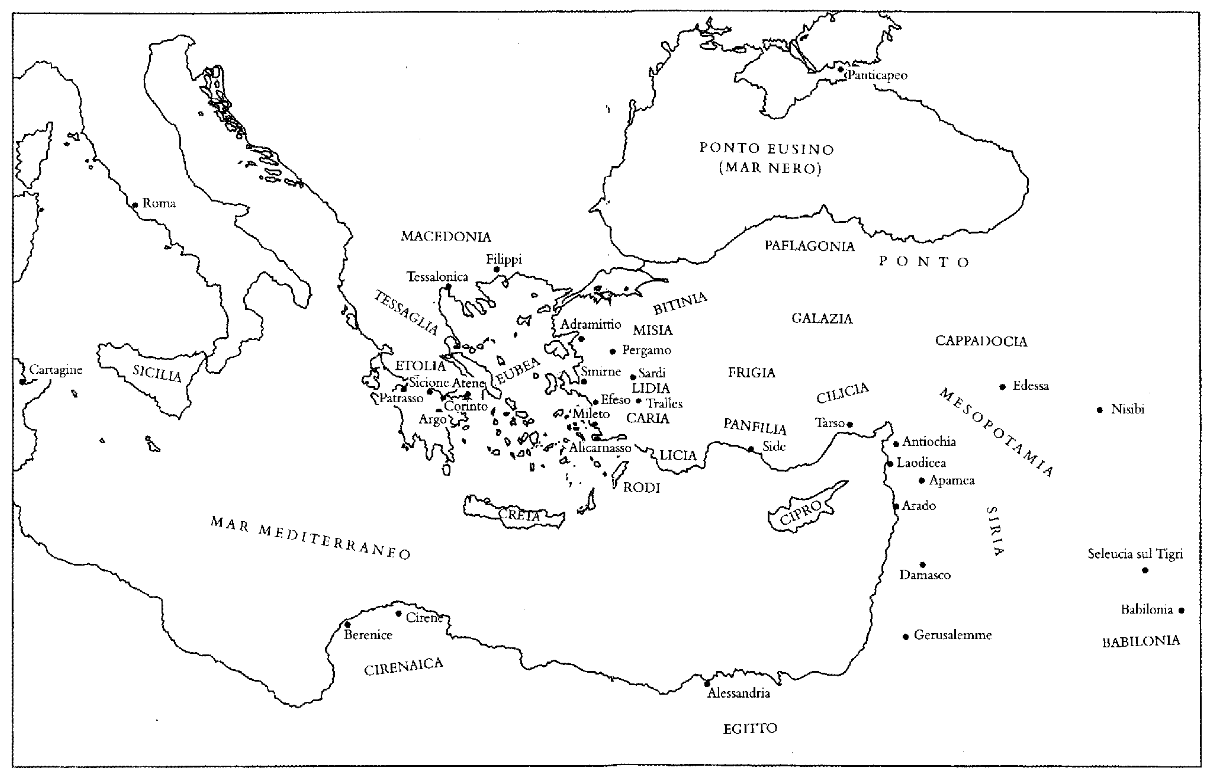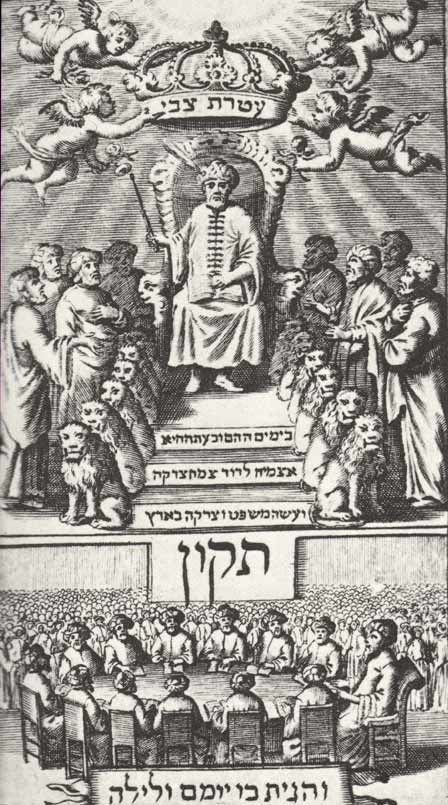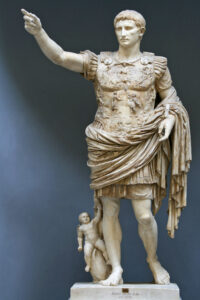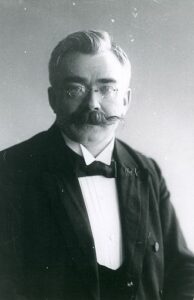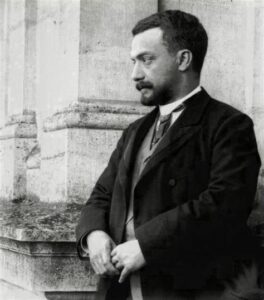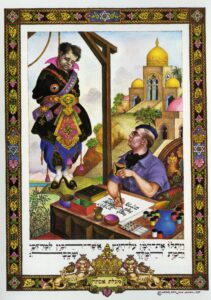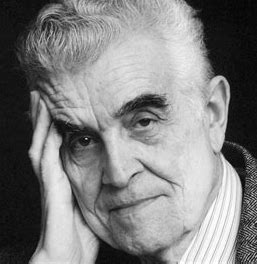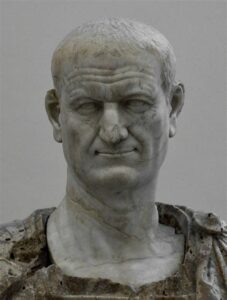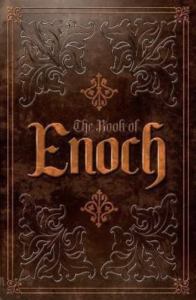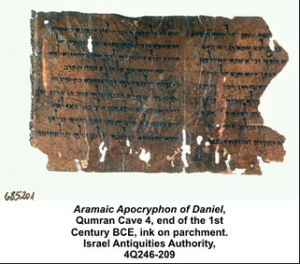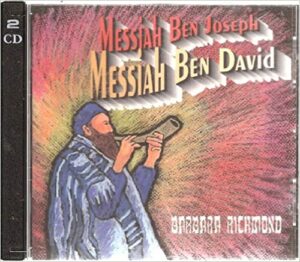Critique of the Gospel History of the Synoptics
by Bruno Bauer
Volume 1
—o0o—
391
Appendix.
The Messianic Expectations of the Jews at the Time of Jesus.
All those who have spoken out against Strauss’s interpretation of the evangelical history in recent years also felt it was their duty to protest against the derivation of sacred history from the Messianic expectations of the Jews. But this protest, no matter how earnestly intended or spoken with holy disgust at the supposed blasphemy, was from the beginning powerless and remained so, since it could not prevent Gfrörer from developing the contested view to the extreme that it could reach. But what use was it to recall that this or that Jewish book, which the critic designated as a source for the views of the evangelists, was written six, seven, or fourteen centuries after the composition of the Gospels? What could an argument of this kind achieve, which only focused on individual and few points, if one shared with Strauss the basic assumption that Messianic expectation had already prevailed among the Jews before the appearance of Jesus, and even knew fairly accurately what its nature was? To the same extent, a dispute of this kind had to be futile and useless, just as it was impossible for Strauss to make the origin of the evangelical history understandable, as long as he, like Hengstenberg, considered the Messianic dogma of the Jews as one that had already been fully developed before the appearance of Jesus. Both criticism and apologetics shared the same error, their struggle could only lead to unfruitful quarrels, but not to a decision, and the matter suffered most – it remained buried in prejudices.
392
Since Gfrörer has now taken uncritical thinking to its peak, it is finally time to come to our senses and to recognize reason, which has not yet come to recognition in this regard after two thousand years of error in history. It is a matter of the utmost importance – who does not immediately sense it? – to bring criticism to its ultimate crisis and to make it the last judgment of the past by elevating it to complete ideality and universality and freeing it from the last unrecognized positive with which it has still been entangled. The last and most persistent assumption that it still shared with apologetics must be addressed – and how extraordinary is the reward that follows the resolution of this uncritical assumption when the creative power is again attributed to the Christian principle, which even the previous criticism had denied.
Apologetics, as it has developed or rather remained the same since the beginning of the Christian community until our day, could not even conceive the idea that it might be possible to question whether the Messiah’s view had become a reflection concept before the time of Jesus and had come to power as such. It couldn’t – because it is already clear to them from the outset that the content of the revelation has always been the same and always the same one object of consciousness *); it must not – because in its limited polemical interest, it believes that the connection of the Old and New Testament is only ensured if it demonstrates the content of the latter as a real object of consciousness in the former. To interpret the preparation of Christianity differently, namely to say that Jesus only had to say: “See, I am what you have been expecting so far” – this is completely impossible for them.
*) The author allows himself to refer to the detailed explanation in his presentation of the Religion of the Old Testament, section 54.
393
Until now, it was impossible for criticism to free itself and history from the apologetic shackles, as every opposition in its first form shared the assumptions of its opponent and only determined them differently. Hengstenberg and those before him claimed that in Jesus, what the pious had hoped and expected had appeared, while Strauss claimed that in the Christian community, the history of Jesus had been created and elaborated as an image and fulfillment of Jewish expectations.
After having proven in the above criticism that the gospel history has its principle solely in Christian self-consciousness, and that its assumptions, as far as they are contained in the Old Testament, were only used by the community and the evangelists as these assumptions for the elaboration of the Christian principle and the messianic image, we want to provide evidence in outline that the messianic element of the Old Testament view did not develop into a reflection concept before the beginning of the Christian era.
It is not necessary to mention here in more detail that the messianic views of the prophets had not yet been raised by them to the unity and solidity of the concept of reflection; we have proven this in our presentation of the religion of the Old Testament. The interest of the present investigation lies solely in the question of whether the idea of “the Messiah” had prevailed among the Jews in the centuries immediately preceding the advent of Jesus.
If we first examine the Septuagint, whose oldest components are said to date back to the third century BC, and Jonathan’s paraphrase, we have an example of what a translation of the Old Testament must look like when it is written in a time and environment where “the Messiah” has become the subject of consciousness and the view has become dogma. The translator must indicate explicitly the individual passages that can and should be interpreted messianically, and he must state expressly that the passage speaks of the Messiah at that point. A necessary consequence of this reflection will eventually be that even in the translation, the systematic theory cannot be denied, namely that the content of one passage is transferred to another and one view is combined with another – all things that one searches for in vain in the translation of the LXX. Once (in Balaam’s blessing, Num. 24:7), it is indeed said differently from the original text: “A man shall come out of Jacob’s seed and he shall rule over many peoples.” But it is not only not said that this man is the Messiah, it is rather clear that it is to be a man, that is, a future king in general, who (v.17) will wound the princes of Moab and plunder the children of Seth.
394
Gesenius (*) sees in Isaiah 38:11 a “messianic passage that inserts the LXX.” In the original text, Hezekiah says: “I will not see Yahweh anymore.” The Septuagint, which is known to alter such statements that refer to seeing God, instead reads: “I will not see the salvation of God, το σωτήριον του θεου.” But what messianic meaning could there be in this, if the LXX replaces the more specific “God” with the more abstract idea of God’s relationship to the world, or with a specific type of revelation of the divine? Gesenius (**) says: “Compare Luke 2:30, 3:6, Acts 28:28 for the scarcely misunderstood expression.” But if the general and indefinite categories of an earlier standpoint, which the later one uses to denote – and even to abstractly denote – its more specific content, had already expressed the same content earlier, then the LXX translation is full of messianic passages. Luke modeled his diction after that of the LXX, and did what the later standpoint always does: he gave a new meaning to the earlier general expression by using it to represent the Christian view.
(*) Comm. on Isaiah, vol. 2, p. 62.
(**) Ibid, p. 611.
395
It is well-known and often said that the Old Testament apocrypha know nothing of the Messiah. This entire literature has only been able to produce the meager product of the Book of Baruch in prophecy, a book in which all the liveliness and power that belongs to the vision of the Messiah has died out. Even though the thought of a better future occasionally appears in the apocryphal writings, in which the enemies of the people are punished or converted, or even when the older formula of an eternal reign of the house of David is used without mentioning the Messiah, this is the strongest proof that the messianic expectation was completely foreign to that time. Only occasionally, when the accidental course of the speech leads to David, is there talk of the eternal duration of his reign (Sir. 47:11, 1 Macc. 2:57) – proof enough that it is not a living faith that looks to the future, but only the habit of Old Testament expression that lends this hyperbolic and indefinite formula to the writer.
A favorable fate, or rather the wisdom of history, the right tact of its readers and its own prophetic power have preserved the Book of Daniel from the fate of being placed in the category of the apocrypha and have earned it a well-deserved place in the canonical literature. Although written in the period of apocryphal literature, after the struggle with Antiochus Epiphanes, it is not only in chronological terms, but also in its inner content, the conclusion of the old prophetic literature. In this book, the two kingdoms, that of the Lord of Heaven and that of the world, are already separated with the most decided reflection, and the heavenly kingdom appears as a firm and certain object of expectation. The Messiah has become a freer subject of contemplation here than with any other prophet; he rides on the clouds of heaven and is brought to the throne of the Ancient of Days to receive all power, glory, and rule. As far as it could be done from the prophetic standpoint, the reflection is completed here; for on this standpoint, it cannot be taken further than to that form of free combination which establishes the Messiah as an independent personality of the heavenly world from the outset and allows him to be clothed in advance with the general power that is destined for him.
396
The powerful man who wrote the Book of Daniel in such a spiritually barren time as the Maccabean era stood alone with his view, which represented the final transition from prophecy to fulfillment, and the deep content of his work remained unrecognized in the following time, until it was developed and bore fruit in the self-awareness of Jesus and the community. The author of the first book of Maccabees, who wrote at the end of the second century BC and, as several keywords prove, knew and used the Book of Daniel, had no inkling of what a treasure he possessed in this book. If the expectation of the Messiah had been nurtured and the powers of the time had been devoted to the development of the messianic idea, the standpoint of reflection that the Book of Daniel had established would have had to be maintained, at least if we are to forget the demand for further development for a moment. However, the author of the first book of Maccabees knows nothing of a Messiah, only that he lacks the prophetic revelations that had been bestowed upon earlier times, and he hopes for nothing more from the future than their return (1 Maccabees 4:46, 9:27, 14:41).
Although the intellectual work produced by the apocryphal literature of the Old Testament was not entirely insignificant for the development and foundation of the Christian principle.
397
The idea of divine wisdom, in which this literature has reached its highest point, was excluded again by the Christian consciousness, and even gave it the material and category to attempt to determine the difference in the divine nature in which the personality of the Messiah had its eternal presupposition. What does this mean other than that the idea from the Apocrypha could only become important and fruitful for the Christian principle once it had already entered into reflection on itself through its original form? It was not immediately relevant for the initial emergence of the Christian principle, and even less could it have pushed the consciousness of the people towards messianic expectations. On the contrary, due to its abstract nature and implementation, it had to draw all those whom it influenced away from the specific messianic hope, if it really existed, and give their view a fundamentally different direction. The idea of wisdom is concerned with the past history, the former leadership of the people, and the relationship of Israel to other nations; it wants to grasp the general relationship of the divine nature to the world in the specificity in which the history of the people and its relationship to the rest of the world is grounded. It grasps this specificity of the divine nature itself in an abstract way and cannot bring it to real personality – what significance can the idea of the Messiah, which looks towards the future and has to do with a specific personality, still have? If the idea of wisdom was important for the Christian principle, it was only through the detour that history usually likes to take in transition periods, whereby it made the people forget the limited conception of the messianic idea found in the prophets and gave the consciousness of the people an abstract generality, from which that idea should be reborn in a deeper form, with a more general background and a more substantial presupposition. As long as that idea was being developed and while it was engaging the spirits with the original interest, it was not otherwise possible: the specific idea of the Messiah could neither be present nor could it take shape into a fixed form from the older prophetic views.
398
He also did not develop in the writings of Philo – if we are allowed to go beyond the time when Jesus appeared. Philo, like Baruch, Sirach, and other authors of apocryphal writings, speaks of a time when the people will return from dispersion to their homeland and their enemies will be punished. But what does he know about the Messiah? Once *) he speaks (according to Num. 24:7, LXX) of a man who will rise up as a general and warrior and conquer great nations. Once! What does this mean for a writer who is as verbose as he is! And in this one instance, he uses the words of the Holy Scriptures and even notes that he is quoting a prophecy. **) He, who is usually so lengthy, who repeats his thoughts so often and in the most varied ways, is so laconic on this point, and when he is led to it once, he only touches on it with the words that the scripture provides? He repeats a view that he cannot give a new turn to? In his system, this view has not received an internal position or gained development – it has only been presented to him by chance once. But it is also outside of any connection with another view, according to which the people will be led by a human form upon their return to the homeland, which is more divine than human nature, and will only be visible to those who are to be saved, but invisible to the enemies. ***) It is likely that the Logos will serve the people as their leader in this way. “The Messiah” is neither this vague, floating, and baseless figure nor the conqueror of nations mentioned elsewhere. For this reason alone, we cannot say that Philo “knows the Messiah” because he allows both views of the warrior and the aerial figure that will appear to the people upon their return to the homeland to stand isolated and foreign to one another. It may be that when Philo came to these isolated views, he was driven by a tendency and followed an impulse that had emanated from the spiritual revolution that had begun in Palestine. It is just as possible that without such an impulse, the prophecy of Num. 24:7 and his view that the Logos led the Israelites out of Egypt in the pillar of cloud gave him the material with which he filled out his view of the final liberation and redemption of the people. But it is certain that the idea of the Messiah was not given to him from tradition. It is certain that he did not take into account any scriptures other than the prophetic writings, except for a few cases, and only dealt with the Law and its explanation. But as soon as the idea of the Messiah had gained some power and life among the Jewish people, the focus was immediately on the prophets, and the study of their writings became alive.
*) de praem. Opp. II, 423
**) έξελευοεται άνθροωπος, φησιν ό χρησμός.
***) de execr. Opp. II, 436
399
Neither in the last centuries before Christ nor in the beginning of the Christian era were the prophets the subject of general interest or scholarly explanation, nor were their writings read in the synagogues like the Law.
We hear nothing about the messianic expectations being a point of contention between the Pharisees and the Sadducees. Both sects diverged in that the Sadducees only attributed legislative significance to the Mosaic scriptures; however, this restriction of the legislative canon was not prompted by the slightest consideration of messianic prophecies – they were not even mentioned. Besides their dogmatic interest in denying the resurrection and existence of angels, their opposition to the traditional development of the Law, which the Pharisees advocated, forced them to this negative criticism. They believed they could not free themselves from these traditions of the Law in any other way than by recognizing only the original Law as the canon of positive religious and legal provisions.
400
The Law was also the only scripture read and explained in the synagogues according to the sections designated for each Sabbath. Even those who have an interest, based on their assumptions, in pushing the interpretation of the prophets as far back as possible before the Christian era must concede, at least to maintain their hypothesis, that “a general (!) – as if an arbitrary or differently determined one in different places were proven – a general establishment of the prophetic readings had not yet occurred in the third century (after Christ).”*
*) Zunz, Die Gottesdienstlichen Vorträge der Juden, p. 6.
But, it is said, it is clear from the information in the New Testament itself that prophetic readings were already customary before the destruction of the Temple. When Jesus stood up in the synagogue in Nazareth to read, they handed him the book of the prophet Isaiah (Luke 4:16-17). However, if it really mattered to Luke, he would have paid much attention to the customs of the time, and if he knew, he would have recorded it. It was only necessary for Jesus to be given the book of Isaiah to facilitate the miracle of him finding the appropriate passage to demonstrate its fulfillment in his person. Whether the prophets were read in the synagogue or not is irrelevant. In any case, Paul also taught in the synagogue in Antioch “after the reading of the Law and the Prophets” (Acts 13:15). Of course! Because the Gospel rested on both. But what do we learn from this kind of pragmatism, formed only from Christian assumptions, about the organization of the synagogue? Nothing! Certainly nothing reliable!
401
“Jonathan’s Targum of the Prophets, says Zunz*), provides evidence that the content of the prophetic books was explained to the public either within or outside of the Targumic reading, as a result of studies that produced firm national concepts.” Indeed, if it were proven that the Scripture was already being read in Chaldean paraphrase in Palestine during the time of Jesus, and if it were true that Jonathan was a disciple of Hillel, then the prophets must have been explained in the synagogues long before, and the expectation of the Messiah must have already existed. However, if the age of Jonathan’s paraphrase is used as evidence, it must first be proven that it is centuries younger, and other reliable information must also prove that the prophetic idea of the Messiah existed among the people before the Christian era.
*) ibid, p. 332.
We will soon add to the evidence that it did not have this influence and power, that Jonathan’s paraphrase is far younger than modern scholars assume, after first eliminating another witness to the dominance of the prophetic idea of the Messiah before the time when Jesus appeared.
At least, a work like the Book of Enoch, which can be so clearly shown to have acquired its current form gradually and through various authors, cannot lead us to abandon a statement that is confirmed everywhere else. In this book, the Danielic idea of the Son of Man is executed with perfect reflection; but it should already arouse suspicion that this execution is only found in the middle part of the book, which contains the three parables (Chapters 37-68), which differ essentially from the earlier visions at the point where the Son of Man appears, namely in containing the idea of a universal judgment and no longer strictly observing the limited reference to the fallen angels that had prevailed until then. When the Son of Man reappears after these parables, for example, immediately in Chapter 69 and Chapter 70, the disconnectedness of the presentation and the complete lack of coherence prove that these intermediate sections were only formed and inserted after those parables were added to the original text. Or, for those who are better at patching things together, they may prove that Chapter 104 was conceived and written in one go by the same author as the preceding and following sections.
402
Lawrence has also pointed out that even the three parables are fragmented by a foreign interpolation, as in Chapter 64-67 a section is suddenly inserted into the third parable, in which not even Enoch, but Noah, the same Noah whose birth is only told in Chapter 105, reports a vision.
A Christian – several Christians must have had a hand in the gradual expansion of the book. The birth of the white calf, which all the animals of the field and the birds of the sky worship and call upon at all times, and whose nature all animals assume (Chapter 89, 45-46), can only be understood as referring to the establishment and spread of the Christian church.
But if it is certain that there are Christian interpolations in the book, it loses all evidentiary value if one tries to infer from its content the existence of Messianic expectations before the beginning of the Christian era. Even in that case, it cannot be admitted as a witness in such an important matter if it were to be true that its foundation was already developed in the time of Herod, as recently claimed by Gfrörer after Lawrence.
403
However, we also doubt the latter. This absurd literature – its absurd form and content already prove that we should not look for the germinal ideas that developed the Christian principle in it – deserves to be re-examined in relation to the question that concerns us here. For now, we only note that the apocryphal reckoning and chronology of the Book of Enoch and the Fourth Book of Ezra, even if they were to run until the days of Herod – which is not even strictly proven – is not a reason to date the composition of these books to the time of Herod. For example, if Enoch speaks of seventy shepherds who have pastured the flock since the division of the Jewish kingdom, this number is freely formed after the seventy years of captivity, leading approximately to the time of Herod. If it does not lead there – and it does not lead there, it leads into the air and the blue – then the author would have filled in the number as he pleased. The author distinguishes thirty-seven shepherds among those seventy from twenty-three following, after which twelve appear. The thirty-seven are the kings of Judah and Israel. But should the author have possessed such precise historical knowledge that he knew even the most unknown princes of the Babylonian, Persian, and Macedonian dynasties and knew how to indicate their sum from twenty-three*)? He, the rough apocalyptist who thought that each of these princes had fulfilled his vow on time (C. 89, 7.)? No! This work and investigation must be resumed from another point of view, for which the apocalyptist is not necessarily regarded as a learned historian. This man, who has such chronology in his head, did not even know how to count twelve from Matthias to Herod the Great.
*) Gfrörer, The Holy and the True, l, 97.
404
The eleven (8 + 3) princes that Ezra speaks of (4 Esdras 12:24, 29) will probably only find their explanation in the Book of Daniel (7:7-8). Such apocalyptic numbers had become categories that were freely processed and applied, and they do not shed light on the time in which these scriptures were composed.
But isn’t the Book of Enoch already cited in the Letter of Jude? Well, one must first prove that this letter was written in the first century and provide a better reason than De Wette and Schott, who rely on the fact that in a context where judgment is spoken of against those who deny God and Christ, there is no mention of judgment against Jerusalem. The author of the letter did not need to mention the destruction of Jerusalem, because it was already over and the opposition to the Jews was no longer relevant; however, the absence of this opposition is evident here since the author is actually fighting against heretics who have arisen within the Church.
If we reflect on the New Testament itself, it speaks from all sides against the assumption that before its composition and especially before the ideal foundation of the Gospels was formed, there was a messianic dogma or Christology among the Jews. First of all, the evidence still holds that the evangelical views emerged from the inner determination of the Christian principle and that the Old Testament colors were only used to express them because they reflected the same idea that the Evangelists and the Church were engaged in. Then, when such a coincidence occurs, the Old Testament expressions, as Mark and Luke prove, are repeated verbatim and copied. Mark tells the story of the calling of the apostles in such a way that he literally uses the Old Testament account of how Moses selected the seventy. A whole series of stories*) is modeled in terms of expressions and arrangements on the story of Elijah. But if the Jews had already possessed a developed Christology at that time and if this had been the model that the Evangelists imitated, they would no longer have been so strictly bound to the diction and content of the Old Testament, and their entire narrative would have revealed a richer diversity. However, their only presupposition in their work was the ideal conception set by the principle, which was discovered only in the Old Testament.
*) Wilke, p. 569. 570.
405
Marcus proceeds with this historical assumption in such a way that he completely intertwines it with his historical representation and does not yet reflect on the content of his presentation. Only Matthew quotes the Old Testament, compares the prophecy with the fulfillment, and directs the reflection to the fact that the holy history had to look just like this in order for the prophecy to be fulfilled. But where do we find in him even one secure trace that leads us to a Jewish messianic dogma? We always find with him only the combination of the ideal world of the new principle and the prophecy, a combination of which he no longer knows how freely it was already accomplished by Marcus before him, which is therefore given to him as positive and which he now makes external. Certainly, when he quotes the Old Testament, there arises in his narration a redundancy that is often disruptive enough; he quotes the Old Testament view, which is already used and processed in the narration that he finds and transcribes. So he gives the same thing twice — but enough: he does not give us a Jewish Christology.
The discourse of Jesus on the last things, as Marcus formed it, is essentially modeled after the prophecies of Daniel, Joel, and Jeremiah: but would not the evangelist have moved more freely if a Jewish Christology and dogmatic expressions of the same had already been given to him? Only Matthew knows specific dogmatic formulas for the last things: of course! Until his time, they had partly formed themselves, partly already gained general acceptance, and he could attribute them to the Lord without hesitation.
406
Even the narrative pieces that Luke and Matthew have added to the original Gospel cannot be attributed to a Jewish Christology, nor do they have any internal connection with this phantom. But if there had been a Jewish messianic dogma at the time when the community developed its historical perspective and religious reflection of the Gospels, wouldn’t this later addition have been even more boldly held on the basis of this dogma? Shouldn’t we find the strongest evidence of such a dogma in it?
If the Jews had already possessed a Christology at the time when the community developed its historical perspective and religious reflection of the Gospels, the messianic interpretation of the Old Testament would already have passed into a fixed type, and it would no longer have been possible for the same prophetic utterances in the New Testament to be applied to Jesus and his work in such diverse ways as we find them. Not only are the same passages applied to Jesus in different ways in the various writings, but the same writer gives the same passage a different relation to the messianic work. Furthermore, a writing like the Epistle to the Hebrews shows that even later on, as the idea of the Redeemer and his work gradually became dogmatically developed, it was still compared with the Old Testament, and its images were sought in it. However, the rigorous approach in which this comparison is carried out, and the fact that these often remote and only homogeneous prototypes, which could only be relevant to Christian doctrine as such, indicate that the author of this letter knew nothing of a Jewish Christology. The prototype of the Paschal Lamb, whose bones were not broken, or the prototype of the raised serpent, which the fourth Evangelist found in the Old Testament, is remote and coincidental enough. How could prototypes of this kind have found their place in a Jewish Christology? If the Evangelists had received their Christology from the Jews, then Matthew would not have been led to apply the prophecy of the suffering servant of Jehovah (Isaiah 53) to the healing of the sick by Jesus with just the keyword “illness”. In short, if a Jewish Christology had already arisen before the time of Jesus, it would have had to be a priori and firmly closed as an ideal type, and there would have had to be a certain meaning and a fixed relationship to the Old Testament prophecies. Instead, we find only one thing here, the dogma that the prophets have prophesied about the Messiah, i.e., Jesus. But in the execution of this dogma, all indications are that it was the first attempt.
407
That dogma, however, only arose with the Christian community, or rather, the moment it arose gave life to the community.
Now, only when Bertholdt’s, his predecessors’ and successors’ Jewish Christologies no longer cloud our minds and make our eyes dull, is it possible to explain a circumstance that has not yet found its sufficient explanation. According to the original type of the evangelical view of history, Jesus did not openly proclaim himself as the Messiah before the people and was only recognized by the disciples as the Son of God shortly before leaving Galilee, and even by the people only greeted as the Son of David upon entering Jerusalem. In any case, even this type was a work in which later reflection had its share; but it would not have arrived at this type if it had not been firmly established that Jesus, while working among the people, never directly announced himself as the Messiah and was never recognized as such. For the one who formed this type, it still had to be an undeniable fact that at the time of Jesus, the expectation of the Messiah did not prevail universally among the people, otherwise, when he (Mark 8:28) reports the people’s opinion of Jesus to the disciples, he would have reported at least one party that held Jesus to be the Messiah; he would not have presented it as if Peter only came to the realization in that moment that Jesus was the Messiah, and he would not have written that the Lord strictly forbade the disciples from telling the people who he was.
408
If the Messianic expectation had prevailed universally among the people, or if it had been the symbol of any specific party or the righteous, chosen, true Israel, etc., then the dead and mechanical relationship would certainly have had to set in that Jesus, at his first appearance, would simply have stood up and said, “See, I am the one you have been waiting for.”
We would then have to assume the only case in history where the man who created a new principle already found the principle – poor language, can you express the unthinkable? – already completed. But where in all of history has an epoch-making man appeared who did not bring with him the specific content by which he made his epoch only in his self-consciousness? Which hero would that be whose essence and person were already expected beforehand, indeed, already existed in expectation, and who now only needed to step forward to say that he was what they had expected? No great historical figure has ever arisen who preached and referred to himself from the outset or at all.
World-historical individuals have only become epoch-making by the fact that the content of their self-consciousness was a new one, not preconceived by anyone, and born only with them. And they only refer to themselves by giving the world a new principle and devoting themselves to and sacrificing themselves for its development. It is only by doing so that they are these heroes, by solving the riddle that had occupied the world in the most diverse forms up to that point in the formula that no one had found.
409
We can save the honor of Jesus by returning his person from the standpoint of death, to which apologetics has brought it, and restoring to it the living relationship with history that it had, as can no longer be denied. That important transformation of Jewish consciousness, which revived the view of the prophets and elevated it to the essential content of religious spirit and the reflective concept of the Messiah, had begun only in the time when John the Baptist appeared with his message of repentance, but it was not yet complete when Jesus followed him. If a view that unites heaven and earth, reconciles God and man, and resolves the essential opposition was to come to power and become the one point on which all the forces of the spirit would converge, nothing more and nothing less was necessary than the appearance of a personality whose self-consciousness had nothing else as its content and existence than the resolution of this opposition, and who would then develop this self-consciousness before the world and draw the religious spirit to the one point where its riddles are solved. Jesus accomplished this immense work, but not by hastily pointing to his person – rather, he developed before the people the content that was given and one with his self-consciousness, and only by this circuitous route did his person, which he sacrificed to his historical destiny and the idea he lived for, continue to live on in the recognition of this idea. When he rose in the faith of his followers and continued to live on in the community, he was the Son of God who had resolved and reconciled the essential opposition, and the only, the all-important, thing in which the religious consciousness found rest, peace, and the object of its devotion, since there was no other fixed, reliable, and lasting one. Now, the wavering and unsteady views of the prophets came together at the one point, in which they were not only fulfilled by him, but also got their common bond and the support that made each of them important. The Messiah was now given as a concept and a firm idea, along with his appearance and faith in him, and the first Christology emerged. We possess it in the writings of the New Testament.
410
We would have to return to the apologetic view, according to which the Christian principle already existed as a reflective concept in the expectation before Jesus, if it were true what the newer critics like Gesenius, De Wette, in complete agreement with Hengstenberg and Hävernick, assert, namely that the Chaldean translation of the Prophets, which is attributed to Jonathan, was made at the beginning of the Christian era. According to Gesenius, Jonathan, the son of Uzziel, was “one of Gamaliel’s *) Jerusalem disciples.” De Wette says **) that only “for trivial reasons” has it been doubted that the Talmudic statement that Jonathan was a disciple of Hillel, and therefore flourished before Christ’s birth, is true.
From this standpoint, it must be said, of course, that Jonathan’s “messianic doctrine appears to be older than the New Testament, rather than younger.” Jonathan’s explanation and translation of Isaiah 53 “seems to have become a very important source of messianic ideas at the time of the New Testament,” and so on.***)
*) same source as before, page 66.
**) Einleitung in das Alte Testament, section 89.
***) for example, Gesenius in the same work, pages 88, 78, 79.
In general, it is characteristic of this type of rationalistic criticism to explain and derive the determinacy of a religious principle in such a way that it is assumed empirically and historically self-evident, and then its historical emergence is understood as a repetition of its earlier historical existence. The Christian ideas already existed in Jewish Christology, and particularly in Jonathan’s paraphrase. Clearly, this historical explanation and derivation of a principle suffers from the lack of going back infinitely, and its refutation is simply brought about by pushing it back into the nothingness of its infinity. The rationalistic criticism must be asked to explain how the reflective concept “of the Messiah” came about in Jonathan’s paraphrase. And if apologetics already carries out the infinite regression itself and finally arrives at the original gospel, which was already given to the first human being, we can leave it standing and let it fall in this empty space.
411
Then, when we have traced this type of criticism back into the past, we can solve the other part of the task and push Jonathan with his paraphrase further forward into the later era in which they belong.
In the point that concerns us here, this paraphrase is based on dogmatic reflection. The idea of the Messiah is finished, stands firm, and connects the originally isolated views of the Old Testament more or less arbitrarily, as the explanation is sometimes arbitrary, as in Isaiah 16:1 – they will bring tribute to the Messiah – or Isaiah 14:29 – from the children of Isaiah the Messiah will arise – in any case, it is very skillful, even sober, cautious and the product of a view that was already very certain of its cause. The Messiah also fights against his hostile counterpart, the Antichrist, who is called the Magog in 1 Samuel 2:10 or the Armillus in Isaiah 11:4. Similarly, the difference between this world age and the coming age in which the Messiah appears is decided in 1 Kings 4:33. Finally, the intentionality with which in the section Isaiah 52:13-53:12 the attributes of glory are attributed to the Messiah, while as much as possible a different direction is given to what is said about the sufferings and low appearance of the Servant of Jehovah and related to the sufferings of the people or the future defeat of the Gentiles – this deliberate substitution of the subject was simply impossible if a specific view of the Messiah was not already firmly established and the opposing one was to be rejected. It is the Christian view that the paraphraser wants to refute and make impossible by withdrawing from it a testimony that was considered its strongest. He has at least betrayed to us the time in which he wrote, so that we can no longer doubt that he produced his translation when the temple was long in ruins, Isaiah 53:5.
412
If one relies on the Talmudic testimony (Baba Bathra F. 134, C. 1.) that Jonathan was a disciple of Hillel, then one must also recognize the other testimony (Megilla F. 3, C. 1.) according to which Jonathan received his paraphrase from the mouths of Haggai, Zechariah, and Malachi, and ascribe to him an extraordinarily long life. Whoever accepts one testimony must also believe the other, and whoever rejects one must doubt or even reject the other, for both are completely similar and owe their origin to the same interest: the desire to increase the esteem of the translation or rather to justify and establish the veneration of the translator by associating him with ancient celebrated teachers. If one was content with making him a disciple of Hillel, the other went further and made him a disciple of the last prophets, who suddenly became contemporaries of each other.
Gesenius believes he can avoid this dangerous dilemma with the help of a natural explanation. “The legend,” he asserts, *) “that Jonathan received his explanation from the prophets Haggai, Zechariah, and Malachi themselves (naturally (!) through tradition) testifies to the great esteem in which his work must have stood.” However, it testifies at the same time that it was capable of assigning to him any age that came to mind. According to Gesenius, Jonathan personally associated with those prophets and received his translation from their mouths, just as (in the same work) it was stated immediately before that Onkelos wrote down his paraphrase of the law based on the information (מפי) provided to him orally by Eliezer and Joshua.
*) ibid. p. 68.
413
If there are indeed passages in the Talmud that can be found in Jonathan’s translation, they are always cited with the words “as Rab Joseph translates. *) ” Even the translation of the supposed Jonathan is cited twice with the words “Rab Joseph says (if we did not have his translation of this scripture, we would not understand its meaning)**).”
This way of citing Jonathan’s paraphrase in the Talmud must be very uncomfortable for those who defend its great age, since Rab Joseph is said to have died in the year 32 AD. Either one ignores ***) the fact that the translation is never cited as that of Jonathan, or one says that the passages are “all cited from Jonathan by Rab Joseph †).” But this would be a strange way of citing if the real author, whose work one possessed and could easily cite under his name, was never mentioned and his property was always introduced under a foreign name. Why cite passages from another’s translation when they could be easily obtained from the original source? This explanation is erroneous in that it attributes a meaning to the word that it never had. It always means “to translate,” never “to cite.” Rab Joseph alone is mentioned as the translator, and without his translation, as those two passages indicate, the meaning of the scripture would have remained unrecognized in some places.
*) כדמחרגם רב יוטף.
**) Sanh. 94, b. Megillah 3, a.
***) such as B. de Wette, Hävernick
†) so Zunz a. a. O. p. 63
414
Rabbi Yom Tob, who lived in the 14th century, understood the difficulty better. He says *) that Rab Joseph was blind and recited the passages of Scripture in Aramaic, because the Aramaic translation was not yet written down in his time, and only existed in the oral tradition. This would be admitting too much, as it would follow that Jonathan did not write down his translation.
*) Cocerjus, Sanhedr. P. 327
The only solution to the contradiction is to acknowledge it. According to the unanimous testimony of the Talmudic writings, the translation that is now attributed to Jonathan actually comes from Rab Joseph, who lived in the fourth century after Christ. The prestige that the paraphrase gradually acquired led to it being attributed to the last prophets, and if one asked to whom it belonged, it was at least certain that Rab Joseph, whose era was still well-known, could not be thought of. How the name Jonathan the son of Uzziel came about is unknown.
We can, however, explain how the translation of the Law came to be attributed to Onkelos, which has come down to us under his name, and which explicitly interprets two passages, Genesis 49:10 and Numbers 24:17, as referring to the Messiah.
If Onkelos is mentioned four times in the Babylonian Talmud, the most important passage for us is clearly the one in which it is said that he interpreted the Law. Nothing is mentioned of this when he is reported to have been a contemporary of Gamaliel (Avodah Zarah 11, 1), nor when he appears there and in Gittin 56, 2 as the son of Kalonymus, grandson of Titus, and a contemporary of Hadrian. That both refer to the same Onkelos, although he could not have been both a student of Gamaliel and a contemporary of Hadrian, is clear from the fact that he is called a proselyte both times, and even tells how he discussed his conversion to Judaism with Hadrian in the latter case. The third time he is again referred to as a proselyte and is reported to have thrown his parents’ inheritance into the Dead Sea after accepting circumcision (Demai Tosafot 5). Here it is not yet reported that he translated the Law, but now the peculiar thing happens that the Jerusalem Talmud reports the same thing about Aquila, who translated the Scriptures into Greek. Finally, Megillah 3:1 reports that the proselyte Onkelos translated the Law מפי according to the instructions of Eliezer and Joshua, in the first century BC. This reaches its climax, as the same thing is reported by the Jerusalem tractate (Megillah 71, 3) about Aquila the Greek interpreter.
415
Until the fifth century after Christ, before the Babylonian Talmud, no one knew anything about an Onkelos who had transmitted the Law, and now, if one suddenly knows about him, one only knows what is told about him in the Jerusalem Talmud about the Greek translator Akilas? Should this Onkelos be a historical person? Eichhorn*) rightly said that there is no doubt “that the later Babylonian Gemara has transmitted to its Onkelos the information it found in the older Jerusalem Gemara about Akilas.” Eichhorn will also be right as long as modern critics describe his reasoning as arbitrary without being able to conjure up even a semblance of proof. The matter speaks so strongly against the defenders of the greater antiquity of Onkelos that it is sufficient to simply present the information from the Talmudic scriptures.
Although after Morinus’ example, Eichhorn assumes that the late author of the Chaldean Targum was really named Onkelos. Wolf**) has already observed, however, that both names, Akilas and Onkelos, are the same and have arisen dialectically from each other. Now, Wolf says that the same author of the Chaldean Targum is meant in both Gemaras*), but from the fact alone that the Akilas of the Jerusalem Talmud is referred to as a proselyte, it is certain that the Greek interpreter is meant under him. So nothing remains but the fact that at the time of the Babylonian Gemara, the late Chaldean paraphrase of the Law had gained esteem, that its author was not known, and now believed no differently than that the עקילס, from whom the Jerusalem Gemara reports its fables, is indeed the originator of the Chaldean paraphrase.
*) Einleit. in das A. T. § 222.
**) Biblioth. Hebr. II, 1151.
*) Isaac Vossius (De vitiis sermonis hebraici) said the opposite, that in both Gemaras the same Akilas, the Greek translator, is meant.
416
In summary, the emergence and spread of the Christian principle, its struggle with the synagogue, and finally the downfall of the temple service and continued interaction between Jews and the Church led to the point where the idea of “the Messiah” became important, significant, and the centerpiece of an ideal world that was previously unknown to Jewish consciousness.
————————————
Like this:
Like Loading...


